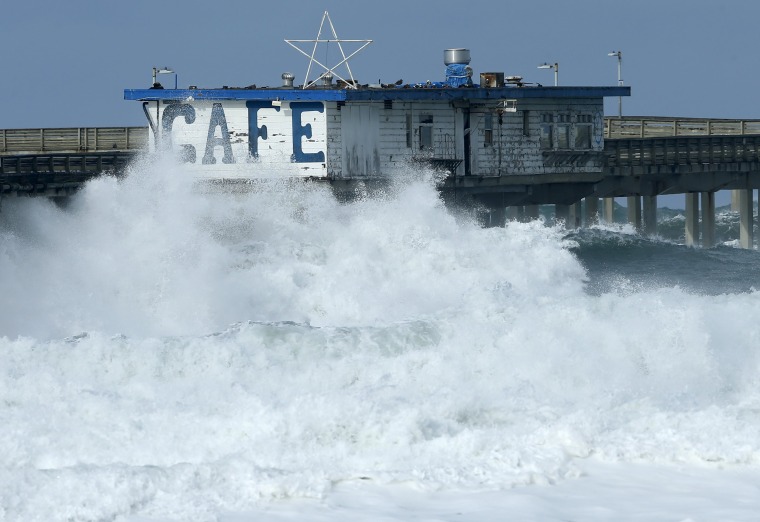The federal Climate Prediction Center said Thursday the equatorial Pacific Ocean was officially in the midst of an El Niño weather pattern, the likes of which have been known to produce healthy storm seasons for sections of the West Coast.
After putting an official "El Niño watch" in effect since spring, the center, which is part of the National Weather Service, released its monthly diagnostic discussion on the matter: "Weak El Niño conditions are present and are expected to continue through the Northern Hemisphere spring 2019," it states.
El Niño, known for its unusually warm waters along the equatorial Pacific, can cause rising air in the atmosphere, send storms crashing into California and also upend global weather patterns.
This week, the coast from San Francisco to San Diego has been inundated with rain fed by an atmospheric river, which is a current of warm, moist air that pulls water vapor from the tropics toward cooler latitudes. There, the concentrated vapor condenses into rain and snow.
Parts of Los Angeles were expected to receive as much as three inches of rain by the time the system moves out Thursday night.
But it's not clear if this El Niño is playing a role.
A destructive, storm-producing El Niño of the type seen in 1983 and 1998 hasn't truly been experienced in the southern half of the state so far this century, according to Jin-Yi Yu, an earth system science professor at the University of California, Irvine.
The absence has been so conspicuous that Yu thinks the nature of the weather phenomenon might have changed, possibly as a result of global warming or rising sea surface temperatures in parts of the Atlantic Ocean, which can influence weather systems in the Pacific.
Yu said El Niños this century, focused more on the central Pacific as opposed to the eastern Pacific, haven't blanketed the West Coast with rain the way past versions of the phenomena had.
The verdict, he said, is that this El Niño might have a limited influence on the wetter-than-normal weather in Southern California but probably not anywhere else.
"Based on my past study," Yu said, "central Pacific El Niños tend to enhance winter rainfall in Southern California. The impact has already been produced."
The data seems to support the theory.
Average seasonal rainfall for Los Angeles is more than 14 inches. So far this season, which began Oct. 1, downtown L.A. has recorded 13.31 inches and could surpass the seasonal average in coming days, NWS meteorologist Kristen Stewart said.
Downtown L.A. measured fewer than 5 inches of rain all of last season, she said.
Chris Orrock, spokesman for the California Department of Water Resources, said the state's precipitation index for the northern Sierra mountains was 33.3 inches, compared to the annual average of 51.8. But further south, in the Tulare Basin, the index measured 19.8 inches for the season so far, more than all of last year (17.9 inches) and 119 percent of average for mid-February, he said.
Alexander Gershunov, research meteorologist at the the Scripps Institution of Oceanography in La Jolla, called the evidence for a storm-influencing El Niño this season "very borderline."
"I don’t think that the wet winter that we’re having now can be clearly attributed to a weak El Niño," he said. "The thinking that tends to associate wet winters with El Niños is based on signals that were developed in the 20th century, and in the 21st century those signals have been in doubt."
The Climate Prediction Center addressed that doubt but not with much certainty.
"Due to the expected weak strength, widespread or significant global impacts are not anticipated," scientists said in the diagnostic discussion. "However, the impacts often associated with El Niño may occur in some locations during the next few months."


